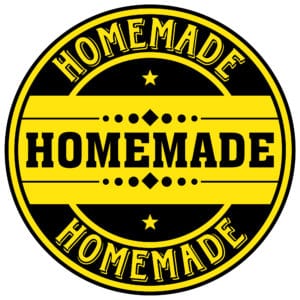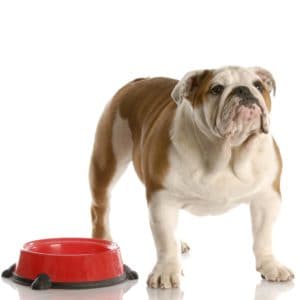 We get it – your puppy is your very best friend, and sometimes it doesn’t feel fair that he’s eating the same thing day in and out. Maybe you wish he could try something a little special once in a while – so you might have thought about homemade puppy food.
We get it – your puppy is your very best friend, and sometimes it doesn’t feel fair that he’s eating the same thing day in and out. Maybe you wish he could try something a little special once in a while – so you might have thought about homemade puppy food.
We usually recommend that owners try to stick with store-bought brands, which make the best puppy food and deliver all the nutrients your little one needs. But, once in a while, a special home cooked puppy food meal can be a very thoughtful treat.
Here’s what you need to know about creating a homemade puppy food recipe from scratch, and some tips to help you make it as close as possible to vet approved wet chow.
About Homemade Puppy Food Recipes
There are some basics to have in mind before you whip out the chef’s hat and a wooden spoon. Your growing best friend relies on a balanced and natural diet to grow, flourish, and be well. Stick to these key nutritional building blocks in the recommended ratios, and you’ll be well on the way to cooking up a delicious puppy dinner!
What Should Home Made Puppy Food Contain?
- First and foremost, your rapidly-developing best friend uses essential amino acids to create muscle and important tissues. Start your recipe by calculating how much you plan to prepare, then make sure that between 35 and 75 percent of the ingredients are lean, meat-based proteins.
- Fat – Next up, growing canines need healthy, slow-releasing fats to give them energy. Here’s where you can try to include more nutritious ingredients than your average store-bought chow. Why not use unrendered beef fat, chicken skin, or something equally delicious? 10% fat per meal is a good figure to use as a guideline. Just make sure to watch these amounts closely as too much fat can lead to diarrhea in your growing pup.
- Low-GI carbohydrates – Colorful carbs provide your fluffy pal with vitamins, minerals, and fiber for an optimal diet. Think about what root vegetables you might incorporate into your recipe to give your pup energy, such as sweet potato or yams? These can make up between 25 and 65 percent of your homemade puppy food recipe. Other low-GI carbs include all non-starchy vegetables, most fruit, and beans.
- Fruits – To take your healthy homemade puppy food to the next level, you can throw in some nutritious fruits such as blueberries or cranberries. These add even more vitamins for your dog and can even be a great source of antioxidants. Keep it to a minimum, however; we don’t recommend using more than 15 percent fruit in your puppy food. Fruit is beneficial, but too much sugar in a diet can cause GI upset over time. It’s also possible to substitute other vegetable
- Supplements – If you’ve been giving your puppy vet-approved supplements for a while, you can integrate these into your dog’s chow. However, it’s not a good idea to add in new supplements that your vet has not yet approved. If you are interested in offering your pup any new dietary supplements or food toppers, just be sure to get the approval from your vet before going forward.
- Fiber – Last, but not least, you may have some room left over to include dietary fiber for in your home made puppy food. If you want to add some steamed or boiled brown rice, or natural flavors like fish stock, check that everything you include is safe and non-toxic for dogs. Just be sure that these fibers take the backseat to the other beneficial ingredients.
How To Make Homemade Puppy Food
With your thoughtfully-chosen ingredients all ready to go, it’s time to double-check that everything is appropriate, bone-free, and safe for your puppy. Then, you can start cooking!
Here are some tips to help:
- Cut, dice, shred or blend any ingredients that could potentially cause discomfort to your puppy if swallowed whole. That means tearing up any spinach, chopping any large pieces of meat, and deboning any smaller pieces. Removing any bones from the meat is especially important, as bones can cause a life-threatening foreign body in your pup.
- Next, gather your puppy food ingredients into one pot – everything except the vet-recommended supplements (those can go in last).
- Loosen up your mixture a little by adding a small amount of homemade broth or water.
- Here you can either steam or gently simmer your homemade puppy food recipe. If you want to steam it, use a minimal amount of water and use a transparent Pyrex lid so you can keep an eye on your creation. When it’s cooked sufficiently, let it cool in a safe place.
 You can serve your pup his or her dinner once it’s reached room temperature and preserve the rest as you would with your own food. Remember that defrosting then refreezing food is not advisable, so separate your homemade puppy chow into ziplock bags or similar if you want to store a large amount. Just prior to serving that doggy dinner, add in the supplements as you would to your dog’s usual food.
You can serve your pup his or her dinner once it’s reached room temperature and preserve the rest as you would with your own food. Remember that defrosting then refreezing food is not advisable, so separate your homemade puppy chow into ziplock bags or similar if you want to store a large amount. Just prior to serving that doggy dinner, add in the supplements as you would to your dog’s usual food.
An Example Homemade Puppy Food Recipe
Here are some nice examples of different ingredients that you might want to use in your own homemade dog food recipe.
- For your meat-based protein, try to select lean meats with less fat such as duck, chicken, turkey, deboned white fish, or skinless salmon.
- Healthy and dog-friendly fats that you might consider include salmon skin, chicken skin, and oil from ground flaxseeds.
- Low-GI carbohydrates can include beans, lentils, sweet potatoes, or chickpeas. Instead of adding them as extras, you may choose to substitute vegetable carbohydrates with minimally-processed, whole grains such as steamed brown rice, cooked oatmeal, or boiled/steamed quinoa.
- When it comes to fruits, try to stick with items that you’ve seen before on recognized pet food labels. Examples include apples, bananas, pitted mango, and pears.
Is Homemade Puppy Food Safe?
When prepared correctly, the occasional home cooked puppy food meal won’t harm your little one. We recommend thoroughly cooking all meats, vegetables, and starches that you intend to feed your puppy, and steering well clear of anything that could potentially be poisonous or dangerous.
Always remember that your home cooked puppy food should be reserved as a treat if possible and that it shouldn’t be a substitute for store-bought kibble. With reliable and AAFCO-approved store brands, you’ll know that your puppy is getting all the key nutrients which he or she requires to grow up strong and fit. That includes trace nutrients such as calcium, phosphorus, zinc, iron, and selenium – all of which play a big role in your pet’s health.
While you may feel that you’ve prepared the best homemade puppy food on the planet, we also strongly advise that you consult a vet before you consider serving anything up to your fluffy friend. This way, you can also make your homemade puppy food recipes vet approved!
Can you switch to a homemade diet completely?
Switching to a homemade diet full time can be risky for a growing puppy. Since store bought food has to include multiple beneficial ingredients that help to stimulate growth, it is the easiest and safest way to make sure your pup is getting the nutrients they need to thrive. However, if you insist on offering your pup a homemade diet each day, you should carefully pick your ingredients.
Make sure to do thorough research on each nutrient that goes into your puppy’s diet, and always run this list by your veterinarian before you make the switch. Your vet is the only one that can offer you reliable advice when it comes to the ingredients in your dog’s bowl, so you should always seek out their answers rather than those online when switching to a homemade diet. As long as you get the approval from your vet that your homemade diet has everything your puppy requires to grow strong and healthy, then it is acceptable.


